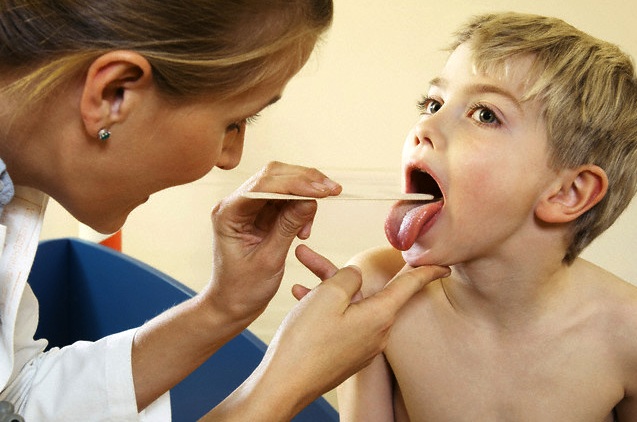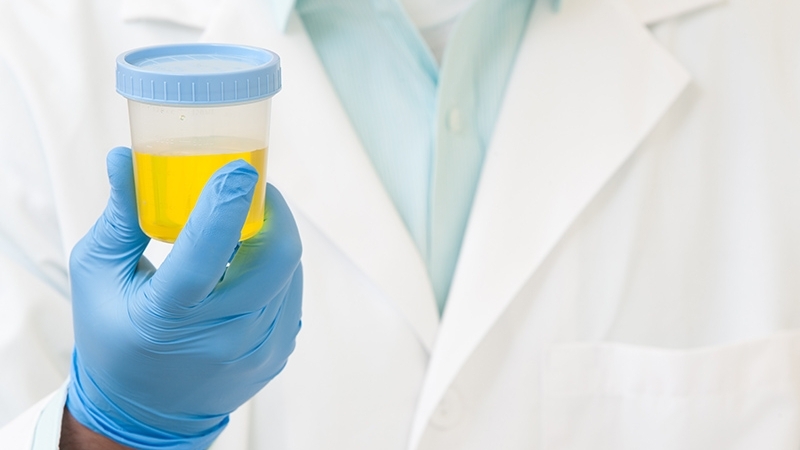What is streptococcus in a urine test? Streptococcal infection in urine
An actively developing infection - streptococcus in the urine - can lead to irreversible consequences, although, at first glance, the bacterium seems harmless. In small quantities it does not harm an adult (for example, streptococcus agalactiae or streptococcus agalactiae). But if the immune system is weakened and the colony increases, complications will arise. Only antibiotics can overcome such consequences. The difficulty lies in the symptoms of the disease, invisible in the early stages, which appear much later. In this regard, doctors recommend regular urine tests to determine the infection.
What is it?
The infection can live in urine. Almost always the cause of infection is beta-hemolytic streptococcus, which destroys red blood cells.
Harmful streptococcal infections appear when the immune system is severely weakened, a large number of bacteria enter the body at once, or hypothermia of bodily organs occurs. In other words, it is almost impossible to avoid streptococci, but you can monitor the number of colonies through basic personal hygiene and a healthy lifestyle.
 If the environment is favorable for bacteria, an inflammatory or infectious process may develop.
If the environment is favorable for bacteria, an inflammatory or infectious process may develop.
More often total infection occurs by airborne droplets. But infection is possible:
- during dental operations;
- placental route (from mother to child);
- through chronic bronchitis.
How does the pathogen get into the urine?
Streptococcus enters the bladder from the skin through the urethra. There are also options when it is transferred into the urine from the colon (the so-called fecal pathogen). From the anus, bacteria move into the urethra. The next chain is the bladder and above. This “ascending” path is more often typical for women due to its anatomical feature.
Symptoms of streptococcus in urine
There are no exact symptoms for streptococcal infection. It all depends on the area of the body affected by the infection. Symptoms of infection are associated with the fact that the bacterium, in the process of its life activity, releases toxins that are harmful to the body. Hence the unpleasant sensations. The most common signs are skin rashes, increased or decreased temperature, and unstable blood pressure. A dull pain appears in the kidney area, and problematic urination is observed. A urine test reveals unhealthy elevated levels of creatinine and hemoglobin.
If redness is already clearly visible, pus forms on the affected area of the body, and pain is felt when pressing, it means that the infection is at its height. It is important to remember about the threat of toxins entering the bloodstream with infection, as a result of which there is a high probability of a person going into shock. As soon as the first, indirect symptoms of the disease appear, you need to immediately get tested.
Why is it dangerous?
When an adult is affected
 Streptococcal infection causes a number of diseases if treatment is not started in time.
Streptococcal infection causes a number of diseases if treatment is not started in time. If left untreated, it can lead to inflammation of the bladder, resulting in urethritis. True, such processes occur only with weakened immunity. Urethritis affects both women and men. Symptoms of urethritis are:
- pain and/or discharge during urination;
- itching and burning in the excretory canal.
If urethritis is not treated, then there is a high probability of cystitis, prostatitis, disturbance of the vaginal microflora, orchitis, balanitis, vesiculitis. Such consequences are possible after a sore throat caused by streptococcal infection in the respiratory tract. After passing through the urinary system, the bacterium can enter the kidneys and cause the disease glomerulonephritis.
What to do during pregnancy?
During pregnancy, 20% of women are diagnosed with this infection in the urine (even fecal streptococcus). Doctors say that the cause of the disease is tight synthetic underwear, improper intimate hygiene, unprotected sex (fecal matter is transmitted this way), and unsterile personal hygiene items. Such a high percentage of pregnant women suffering from streptococci is simply explained. During pregnancy, the body is weakened, immunity drops, which gives rise to the active development of infection.
 With weakened immunity, the infection develops faster.
With weakened immunity, the infection develops faster.
However, pregnant women should not overlook or take the treatment of the disease lightly. Complications include allergies, purulent otitis, sepsis, problems of the genitourinary and cardiovascular systems. As a rule, women learn about streptococcus based on the results of laboratory tests of urine or smear. In order for the research to give the correct result, it is necessary to pass the analysis correctly. A woman must wash herself before giving urine and cover her vagina with a sterile tampon. The container must be sterile; a disposable container is ideal. When a disease is detected, the woman is prescribed treatment, which consists of a course of antibiotics, and the doctor monitors the progress of the pregnancy.
Streptococci cause various diseases and are detected by modern diagnostic methods. A urine test during pregnancy can confirm or refute the presence of group B streptococci in a woman’s body. If the laboratory result is positive, treatment with antibiotics is carried out.
Group B streptococcus.
Group B Streptococcus (GBS) is a common bacteria that causes health problems. For an adult, this microorganism is usually not dangerous. GBS discovered during pregnancy poses a serious threat to the fetus.
About 10-30% of expectant mothers are carriers of group B streptococcus. Since this bacterium is present in the body of every fourth woman in an “interesting” situation, it cannot be called rare. However, it is also unacceptable to be indifferent to GBS. The fact is that a woman can transmit this microorganism to her child during childbirth.
In most cases, it is possible to determine that streptococcus is present in the body only by the results of laboratory tests. To do this, it is necessary to conduct a detailed examination of urine or smear. In only a small number of the population infected with GBS, the bacteria's activity leads to urinary tract and bladder infections.
Types of streptococci and diagnosis of infection during pregnancy.
Hemolytic streptococci are the most common pathogenic bacteria. They are divided into several groups based on various criteria.
Group A streptococci are transmitted by airborne droplets, and less commonly through contaminated dishes and food. These microorganisms are detected by examining a throat swab. To prevent infection, doctors recommend observing basic hygiene requirements.
Group B streptococci are detected in 10-30% of expectant mothers. Most carriers of the bacteria are sexually active women under 20 years of age. GBS is transmitted during sexual intercourse from an infected partner to a healthy one.
Streptococci can be found in various organs. To identify pathogenic microorganisms in the urinary tract, a urine culture test is performed. If the rules for collecting material are not followed, this diagnostic method produces false positive results.
The study requires an average portion of urine and a sterile container. It is best to use disposable containers, which are available in every pharmacy. Before collecting material, you must wash thoroughly. When urinating, it is advisable to cover the vaginal opening with a sterile tampon.
Another diagnostic method is taking a smear from the vagina. Analysis is optional. Pregnant women take it at the direction of a gynecologist.
If the expectant mother suffered a urinary tract infection caused by streptococci during the gestational period, or in the past gave birth to a child infected with these microorganisms, then at 35-37 weeks of pregnancy she needs to undergo a smear. If the result is positive, the doctor will prescribe a course of antibiotics and will closely monitor the woman’s health.
How dangerous is streptococcal infection?
Unfortunately, GBS is a dangerous bacterium that can lead to various pathologies. That is why, if group B streptococci are detected in the urine or smear, urgent treatment is necessary. Lack of timely treatment increases the risk of:
- premature birth;
- intrauterine fetal death;
- premature rupture of membranes.
In addition, GBS is a common cause of urinary tract infections. This microorganism can lead to increased body temperature, burning and pain when urinating. Almost always, streptococcal infection is asymptomatic, but is detected by examining urine and smears.
In 1-2% of cases, infected mothers transmit group B streptococci to their children during childbirth. If this happens, the child develops the following diseases:
- meningitis;
- sepsis;
- pneumonia.
However, there is no need to despair. Modern medicine successfully combats GBS in newborns with antibiotics (penicillin, ampicillin) and intensive symptomatic therapy. Most infected children recover. In only a small number of young patients, streptococcal infection causes future pathologies, such as hearing or learning problems.
To prevent transmission of infection to your newborn, you should closely monitor your health during pregnancy. It is advisable to be tested for the presence or absence of GBS shortly before delivery. For preventive purposes, it is necessary to strengthen the immune system and lead a healthy lifestyle.
Signs of a child becoming infected with streptococcal infection.
Signs of early and late infection may appear. In the first case, fever, increased drowsiness in the first week of life, and problems with the respiratory system appear. Early onset of the disease occurs in 50% of newborns and sometimes leads to sepsis, pneumonia and meningitis.
With a late onset of infection, cough, problems with eating, high body temperature, convulsions or drowsiness, and nasal congestion are observed. These symptoms occur between 7 days and 3 months after birth and often provoke meningitis and sepsis.
In 99% of cases, infected newborns have no symptoms of the disease. For this reason, doctors recommend establishing GBS colonization through laboratory diagnostics. The test material is obtained by taking samples from the baby’s throat, external auditory canal, navel, and rectum. The presence of pathogenic microorganisms can be detected by examining the amniotic fluid.
Consequences and treatment of streptococcal infection after childbirth.
Sometimes GBS leads to infection of the uterus. In this case, the following symptoms arise:
- high body temperature;
- increased heart rate of mother and fetus;
- painful sensations in the abdomen.
Antibiotics are used to combat GBS. These medicines administered intramuscularly or intravenously before childbirth. It is optimal to use antibiotics 4 hours before the baby is born. This will help prevent the newborn from becoming infected.
Penicillin (sometimes ampicillin) is usually prescribed to treat streptococcal infections. In some cases, these drugs cause an allergic reaction (in 1 in 25 women). This therapy is used only if it is planned natural childbirth. As a rule, C-section relieves the expectant mother of the need to take antibiotics.
Despite all the negative consequences that a streptococcal infection can cause during pregnancy, there is no need to be afraid. Firstly, during the gestation period, various abnormalities are diagnosed, including the presence of GBS in the body (by examining urine and smear). Secondly, timely treatment helps to cope with a dangerous disease, preventing negative consequences for the mother and her baby.
Infectious diseases of the urinary system are diagnosed in expectant mothers using urine culture. Quite often, during bacteriological examination, streptococcus is detected in the urine during pregnancy, which is activated due to hormonal changes and decreased immunity.
The danger of infection is that in most cases it is asymptomatic and can cause pathologies of the placenta and infection of the baby.
- After leaving amniotic fluid and more than 18 hours passed before the baby was born.
- At the time of birth, the woman had a body temperature of more than 37.5 degrees.
- The age of the woman giving birth is up to 20 years.
- Childbirth before 37 weeks.
It is worth noting that Streptococcus agalactia is common cause mortality in newborn babies. Typically, signs of infection appear immediately after birth. Children have pale skin, uneven breathing, fever, vomiting and neurological pathologies.
Despite the fact that the risk of infection in babies is quite low, about 2 cases per 100 infected mothers, You should not refuse diagnostics for streptococci.
Urine examination for streptococci

One of the most informative tests for streptococcus infection is bacteriological urine culture
One of the most informative tests for infections of internal organs is bacteriological culture of urine. This study is carried out during pregnancy registration and in the third trimester.
Using the results of the analysis, it is possible to determine the presence of an infection that can be transmitted in utero or infect a child at birth. In order for the result to be as accurate as possible, the following rules must be followed:
- Stop taking diuretics and choleretic drugs 3 days before the test.
- Eliminate heavy, salty and smoked foods from the menu one day before.
- Collect only the midstream portion of morning urine in a sterile container.
- Before collecting the analysis, it is necessary to perform genital hygiene and insert a cotton swab into the vagina.
- The test must be taken within two hours of collection.
Streptococcus agalactia in urine during pregnancy is determined by inoculating the material on a nutrient medium - a solution of 5% blood agar. In order for the bacterium to grow, it is provided with an optimal temperature for development of 37 degrees.
If streptococci are present, they form colonies of grayish plaques that are examined under a microscope. Next, the bacteria are sent to test tubes, to determine the characteristics and sensitivity to antibiotics.
On average, a urine test for streptococci takes 7 days to prepare. The advantage of the study is high accuracy, exclusion of erroneous results and false reactions.
Why is streptococcus agalactia dangerous during pregnancy?
In women, this type of streptococcus often causes an infection of the genitourinary system. Inflammatory processes occur due to decreased immunity and the proliferation of a large colony of streptococcus.
Urogenital diseases can be recognized by such signs as pain in the lower abdomen, itching, increased body temperature, and copious vaginal discharge.

Streptococcus agalactia during pregnancy often causes infections of the genitourinary system
Often streptococcus causes the following diseases:
- Urethritis- This inflammatory process mucous membrane of the urethra. In the absence of adequate treatment, urethritis leads to cystitis and inflammation of the appendages.
- Cervicitis– infectious inflammation of the cervix. Complications of the disease can include cervical erosion, dysplasia and cancer.
- Endometritis– inflammation of the uterine mucosa is the most dangerous disease, as it can be accompanied uterine bleeding, placental insufficiency and miscarriage.
With a large number of streptococcus colonies, inflammation of the membranes is possible, which invariably leads to premature birth, pathology of fetal development, and disruption of pregnancy. If a pregnant woman does not undergo drug treatment before the birth of the child, there is a risk of infection of the baby during childbirth.
As a rule, weakened and premature babies with pathologies are at risk.
Streptococcus agalactia during pregnancy can cause dangerous infectious diseases in infants immediately after birth or a few days later.
Streptoderma – affects the upper layers of the skin and can cause deep erosions. The infection can be recognized by flat blisters with clear and then purulent contents. The pustule is accompanied by severe itching, which causes anxiety for the baby.
Vulgar ecthyma – deep skin lesions with ulcers. Purulent blisters with yellow crusts form on the skin, under which a painful ulcer appears. The baby's body temperature is elevated, the general condition is lethargic and drowsy. Complications may include lymphadenitis and lymphangitis.

Streptococcus agalactia during pregnancy can cause serious infectious diseases in infants immediately after birth
Sepsis – a dangerous development of streptococcal infection, which can lead to death. Symptoms of the disease are persistent fever and increased body temperature. If left untreated, toxic shock develops with damage to internal organs.
Meningitis – the inflammatory process of the membranes of the brain is manifested by pallor of the skin, fever, and rash on the skin. Complications may include toxic shock and developmental delay.
Pneumonia – develops as a result of damage to the alveoli of the lungs. Characteristic signs: shortness of breath, cough, vomiting, refusal to eat. The infection has a severe course, but with timely drug treatment, the favorable outcome increases significantly.
Necrotizing fasciitis – Streptococci affect connective tissues and organs. A characteristic sign of the disease are numerous ulcers and purulent wounds. The disease is diagnosed in children extremely rarely.
Any disease caused by streptococcal infection has a severe course and poses a great threat to the baby's life. Only with timely treatment and proper medical care does a newborn have a chance to survive.
But unfortunately, not every child recovers completely; many of them have pathologies and suffer from central nervous system disorders.
If a woman has been diagnosed with streptococcus in her urine during pregnancy, treatment must be started. ASAP, especially if the infection is diagnosed after 30 weeks. Penicillin or ampicillin is used for therapy.
These drugs are absolutely safe for expectant mother and baby, and do not cause any adverse reactions. Before starting treatment with a penicillin-based antibiotic, it is necessary to test for an allergic reaction.

Ampicillin
The human body is regularly exposed to various bacterial infections, which must be promptly diagnosed and treated. Expectant mothers should pay special attention to their own health at the stage of pregnancy planning, since they put at great risk not only their health, but also the life of the unborn child.
In order to avoid infection with streptococcus, it is necessary to ensure regular hygiene of the genital organs, strengthen the immune system, promptly treat diseases of the urinary system and listen to the recommendations of the supervising gynecologist.
Streptococcus bacteria do not pose a danger to a healthy adult, since the immune system successfully suppresses their reproduction. Streptococcus in the urine indicates an infectious disease that can have serious consequences, including death. Therefore, it is important to identify and properly treat the disease in a timely manner. Self-medication is dangerous not only due to lack of effectiveness, but also due to false negative test results. This, in turn, leads to untimely treatment and threatens complications of an existing disease.
What does streptococcus indicate and threaten?
What kind of bacteria is this?
Hemolytic streptococcus is widespread and easily transmitted from an infected person or animal, through unwashed fruits or vegetables (fecal species), personal hygiene products (towels, toothbrushes), by airborne droplets, and can be inhaled with dust. There are alpha, beta and gamma coccal pathogens, which differ in the reactions they cause in the body. The most dangerous group of bacteria for humans is beta bacteria. In particular, this group includes the common species Streptococcus agalactia ( Streptococcus agalactiae), which causes irreversible damage to the nervous system of infants and sepsis in women in labor.
Why do streptococci appear in urine?
Bacteria appear during examination if there is an infection or if urine is collected incorrectly for analysis. The pathogen begins to actively grow when the immune system is weakened, under stress, or as a concomitant disease. Most often, colonies settle in the throat, intestines or genitourinary system. The presence of bacteria in the urine indicates a urinary tract infection. This may be a primary infection or the consequences of other diseases caused by streptococcus, for example:
 The infection can be detected in urine after a sore throat.
The infection can be detected in urine after a sore throat. - tonsillitis;
- scarlet fever;
- urethritis;
- sepsis;
- bronchitis;
- pneumonia;
- meningitis;
- periodontitis;
- pyelonephritis and others.
Symptoms
Streptococcal bacteria release toxic substances during their life processes, causing purulent rashes to appear on the skin. You feel weakness, nausea, fever, and swollen lymph nodes. In this case, there is a frequent urge to go to the toilet, pain when urinating, aching in the lower back or pain in the lower abdomen. The urine becomes cloudy, with bloody spots.
What is the danger?
Untreated streptococcal infections can lead to autoimmune diseases, blood poisoning, irreversible changes in the structure of the kidneys, their failure. Since bacteria are transmitted, among other things, through sexual contact, there is a high risk of infecting a partner during unprotected sexual intercourse. In pregnant women, bacteriuria must be treated before childbirth, since when a child passes through the genital tract, it will certainly become infected. There is also a risk of intrauterine infection.
Threat to an adult
 The risk group includes office workers.
The risk group includes office workers. Illnesses caused by streptococcus affect people with weakened immune systems. Often these are office workers who are exposed to stress and lead a sedentary lifestyle in rooms with poor ventilation systems. Bacteria are part of dust and can be inhaled, causing damage to the respiratory tract (bronchitis, pneumonia, pharyngitis, sore throat), otitis media. If the body's defense system cannot limit the bacterial colony to one focus of infection, general blood poisoning develops.
Risk during pregnancy
Due to changes in hormonal levels and a general decrease in immunity, they are especially susceptible to the influence of bacteria. Streptococcus in the urine during pregnancy occurs in a third of pregnant women. Due to the structure of the genital organs, fecal streptococcus is often found in them. The main threat during this period is infection of the child in the womb or during childbirth. Therefore, pregnant women should regularly undergo urine tests and closely monitor their well-being. Often the course of pregnancy is complicated by pyelonephritis, cystitis; in especially severe cases, these bacteria can provoke a miscarriage.
The microflora of the human body is inhabited by a huge mass of different bacteria. Streptococcus actively multiplies in the urine in conditions of weakened immunity or during hypothermia, infecting the urinary tract. In an environment favorable to infection, the inflammatory process begins to develop.
Ways of infection with streptococcus
The stable presence of numerous colonies of microorganisms in the female genital organs and poor intimate hygiene are the main causes of the disease. Streptococcal bacteria usually do not detect themselves, but can be actively transmitted through handshakes, kisses, and sexual contact.
You can become infected with a pathogenic microorganism:
- by airborne droplets;
- for chronic bronchitis;
- during dental operations;
- through the placenta (from mother to child);
- after eating expired dairy products;
- during unprotected sexual intercourse;
- in kindergartens through toys and dishes;
- after exacerbation of infectious diseases.
Streptococci enter the bladder through the urethra from the skin. Women are also characterized by the transfer of bacteria from the colon (due to the peculiarities of their anatomical structure).
Infection of pregnant women
Streptococci are often detected in urine during pregnancy. They appear when:
- unprotected sex;
- neglect of the rules of intimate hygiene;
- wearing underwear made of synthetic fabrics.
This bacterium is almost always present in the vagina. Since the pregnant woman’s body is weakened, the infectious bacteria develops very quickly, which can cause some complications:
- allergies;
- sepsis;
- disease of the genitourinary organs;
- problems with the heart and blood vessels.
A newborn baby may develop meningitis, pneumonia, sepsis, and a neurological disorder is possible. The bacterium is especially dangerous for premature babies.
Signs of infection appear after the baby is born. The skin is pale, the baby's breathing is uneven, the body temperature is elevated, and vomiting may occur. Not all children recover completely. Most suffer from central nervous system disorders.
The most common signs of streptococcus:
- skin rashes;
- unstable pressure;
- tingling in the kidney area;
- painful urination.
A urine test always shows significantly elevated hemoglobin or creatinine levels.
Testing urine for infection in pregnant women
Bacteriological urine culture is considered the most informative. The examination is prescribed by a gynecologist when a pregnant woman is registered, as well as in the 3rd trimester. This is necessary to identify an infection that can be transmitted to a child at birth or even in utero.
To get the most accurate result, you need to follow some rules:
- 3 days before the day of the test, you must stop taking choleretic and diuretic drugs;
- do not eat salty or smoked foods before donating urine;
- before collecting urine, perform genital hygiene and insert a tampon into the vagina;
- collect only the second portion of morning urine in a sterile container;
- the test must be carried out within 2 hours after urine collection.

If bacteria are present in the urine during pregnancy, they gather in colonies. A specialist examines them under a microscope. After this, they are sent in test tubes to determine their sensitivity to antibiotics. The analysis takes 7 days to prepare. The absolute norm is the complete absence of microorganisms in the urine.
Treatment of the disease
If streptococcus is detected in the urine during pregnancy, then treatment should be started immediately. It consists of several stages:
- Antibacterial therapy.
- Strengthening the immune system.
- Bringing intestinal microflora back to normal after antibiotic treatment.
- Detoxification of the body.
- Symptomatic therapy.
The main course of treatment for streptococcus consists of taking penicillin drugs. Penicillin or Ampicillin is prescribed. The drugs are safe for both mother and child and do not cause side effects. But still, an allergy test must be carried out before starting medication treatment.
To restore intestinal microflora, the following are additionally prescribed:
- Linux;
- Acipol;
- Bifiform;
- Cetrin;
- Zodak.
During the treatment period, excessive physical activity should not be allowed. In case of high intoxication, bed rest is required.
Treatment using folk remedies is possible, but only with the permission of a specialist.
If a staphylococcal infection is not treated, a pregnant woman may experience rupture of the membranes, premature birth, or intrauterine fetal death. Prevention of streptococcus is very simple: maintaining personal hygiene, preventing colds, strengthening the immune system. With timely treatment, you can get a normal outcome and avoid unwanted complications.




